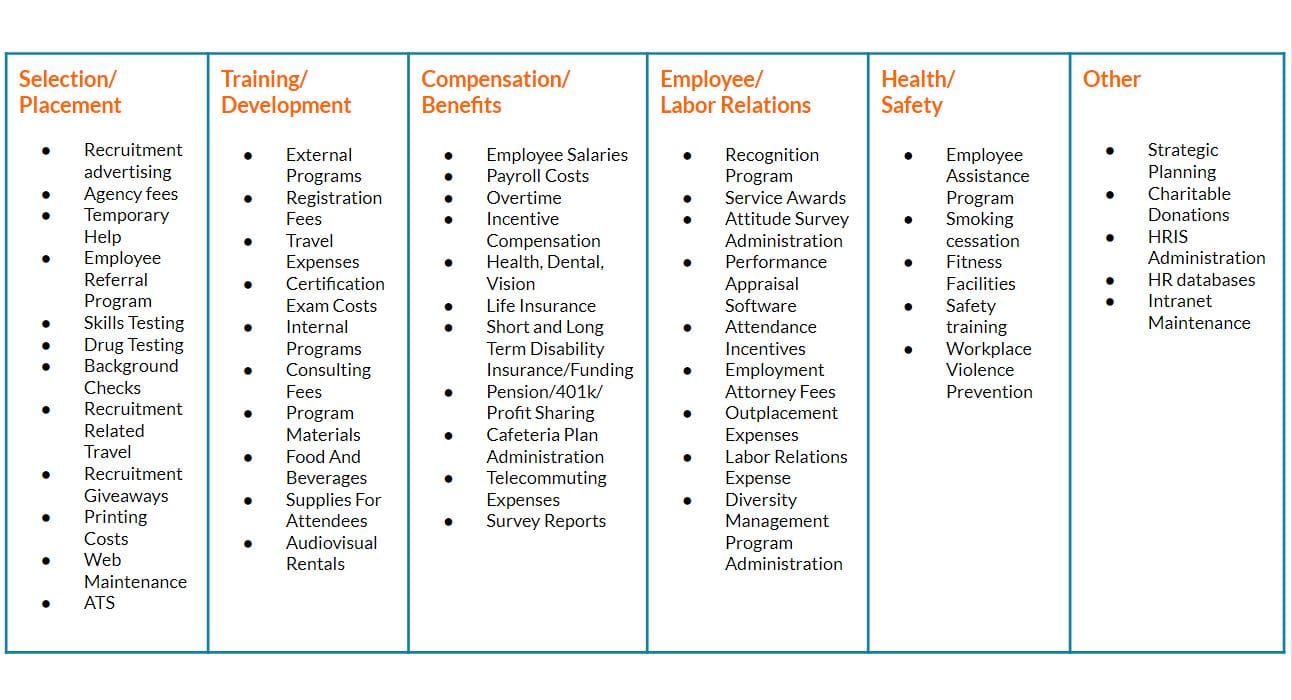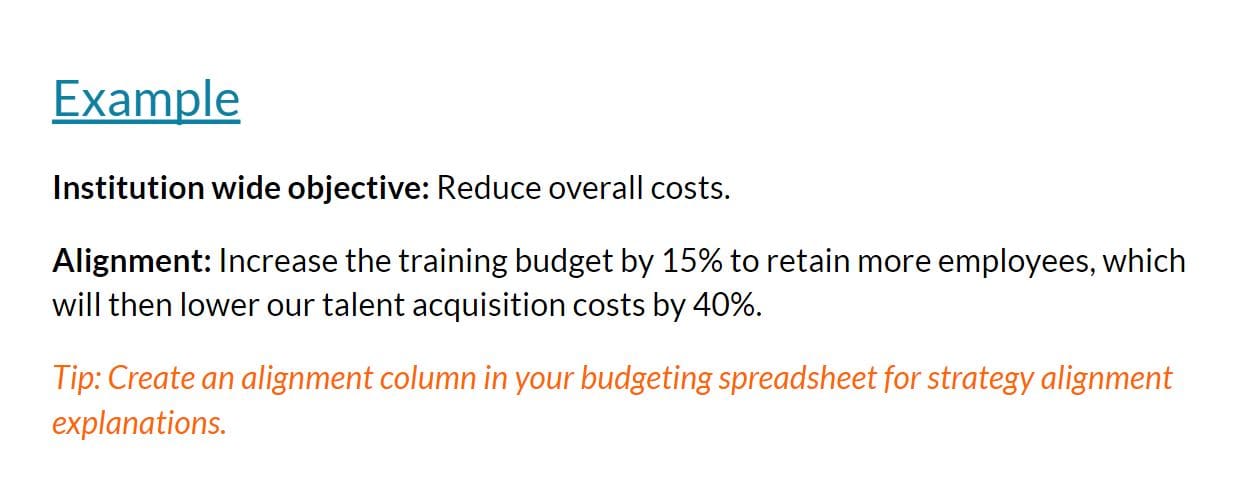9 Higher Education HR Budgeting Tips for 2018
March 02, 2018 by Josh Hrala
The world of higher education HR is changing. There are now more generations in the workforce than ever before, forcing the workforce to adapt quickly while pushing budgets to the brink.
Not only are more Millennials and Gen Z workers entering the workforce every day, Baby Boomers are starting to retire, leaving organizations with leadership vacancies, the need to develop young leaders for the future, and an increase in diversity issues.
Higher ed is uniquely impacted by these shifts because it is one of the most diverse industries that also has some of the highest levels of older workers.
What does this mean for budgeting, though? Well, it means that higher ed HR departments – those responsible for training, retaining, and generally handling all of these issues – have to seriously look at their budgets to ensure they are capable of navigating all of these shifts.
However, despite this fact, HR departments are struggling to have the funds they need. So, to help with that, we teamed up with Brian Dickens, Vice President of Human Resources at Ithaca College, to see how HR can navigate this year’s budgeting season.
Check out our webinar to hear these topics explained in more detail:

Let’s jump in.
HR Budgeting Basics
Before we get into the tips, let’s have a brief overview of budgeting basics to ensure we’re all on the same footing.
In order to know how your budget is performing, you first need to gather some information. This information typically includes:
- Number of Employees Projected For Next Year
- Benefits Cost Projections
- Projected Turnover Rate
- Actual Costs Incurred In The Current Year
- New Benefits Or Programs
- Laws, Policies or Strategy Changes That Impact Costs
- Employee Survey
That’s a ton of information to collect, but it’s ultra important. Coupled with these considerations, HR departments cna break down their budgets by area. For example, these:
- Selection And Placement
- Training And Development
- Compensation And Benefits
- Employee And Labor Relations
- Health, Safety, And Security
- Other
Here’s an even bigger breakdown:
Alright, now that we have an overview of budgeting in general, let’s get into the tips.
Tip One: Find the ROI
Not only does determining your ROI keep your budget on track and helps you understand where you need to spend your funds, it also is a valuable reporting tool.
For example, if you have a budget for leadership development, you can track the returns of that investment to make sure that your organization is reaping the rewards of those efforts. Also, it helps you prove to the leadership team that you need funds to continue those efforts.
By being able to provide ROIs, you can seriously keep your efforts marching forward while also examining them yourself. This is a common sense tip, but it can be easy to overlook something like this because – as an HR manager – you have a lot on your plate already.
Tip Two: Align Your Budget
The next tip is to make sure your budget and goals align with the overall organization’s goals. It can be easy to focus your budget on things that only impact your department.
This is the wrong way of doing business, though, because if HR wants a seat at the executive table the department needs to be working steadily toward the broader business goals, which means aligning their budget with things that will push to those ends.
Not only will this get you a ‘seat at the table,’ it will also more and likely get you the budget you require because it makes logical sense for you to get those funds.
Tip Three: Use Surveys
When you are unsure about something, ask questions. For example, studies show that many workers would rather receive an Amazon gift card than go to a company event. By knowing this information, you can save tons of money because buying personalized gift cards is a lot cheaper than hosting an event with food and all the other costs that can go into it.
There are numerous other examples of this but the gift card one is the easiest to digest because company events are something that organizations do because they have always done things that way. Why keep doing the same thing when it costs too much money and your staff members aren’t even enjoying it?
By using a survey, you can email questions to your team or overall business to see which areas you can change and potentially save money. That money saved can then be used for other, more important areas like development, recruitment, and retention.
Tip Four: On-Demand Learning
Speaking of development, the way people want to learn is also changing rapidly. Gone are the days when people loved talking with consultants and having seminars and in are the days where people want to learn on their own time.
This is especially true for younger workers who have grown up learning by researching topics for themselves online, using YouTube or sites like Lynda.
These changes are great for budgets because consultants can be incredibly expensive. For the price it takes to get a consultant to come in and speak to your staff – plus the added time it takes out of your staff’s work days – can be more than enough to provide on-demand learning tools that your staff can use whenever they feel like.
This allows them to have more freedom while also fitting in development time into their schedules. It can also, like we said, save a ton of money in the long run.
Tip Five: Start Zero-Based Budgeting
First off, what is zero-based budgeting?
To put it simply, zero-based budgeting is when you have to have an explanation for each line item for each period. Basically, you have to justified all of your spending all of the time.
This means you have to examine each line over and over, keeping you nimble and ready to make changes where changes need made.
With a rolling budget that isn’t examined, you can quickly let things go, spending money that you don’t really need to over the course of years.
Tip Six: Review Vendors
When it comes to vendors, you need to be constantly reviewing if there are better, cheaper options available. HR vendors and outsourcing programs can change rapidly as technology changes, meaning that from year-to-year prices can change as well.
Using the same vendor for 10 years is a huge disadvantage because there are probably new vendors now who offer a better service at a cheaper rate. By harnessing the powers of technology, smaller, internet-driven companies are handling the jobs that once belonged to juggernauts of the industry.
Reviewing your contracts and your vendors on a yearly or bi-yearly basis will allow you to stay current with all of the new offerings, giving you a better service and also allowing you to better spend your precious budget.
Tip Seven: Insourcing Leadership Development
Chances are that you business is already full of great leaders. You should be using them more to your advantage. Specifically, you should have them train your younger staffers.
What does this do?
Well, it’s easy to see how this will save you time and money on consultants and speakers. There’s also another big benefit: knowledge retention.

Outside consultants can be great because they offer a specific look at what your company could be missing. However, they do nothing for retaining all of that insider knowledge that your currently employed leaders have amassed over the years. By using these leaders to train the next generation, you kill two birds with one stone.
You can also do this with the reverse. Some older workers who may want to dabble in the gig economy or set up their own small online business could benefits from talking to Millennials and Gen Zers who have grown up with side hustles.
You have a whole plethora of learning potential already built into your business. It’s time to start using it.
Tip Eight: Update Your Policies
As times change, your policies need to change alongside them. But how would this save you budgeting funds?
Well, let’s look at one specific policy that’s making waves all over the country: drug use.
Right now, legal marijuana is a hot topic for everyone: folks that want to use the substance, those who do not, and – for this case – the employer who has to figure out how they are going to regulate the use of the drug on company property, time or when their staffers travel to places where it is legal to use.
Many organizations have simply stopped screening for all of their employees for weed. Instead, they have opted for a policy where employers are only screened if they come to work high just like they would with alcohol.
This saves a ton of time and money performing drug tests or random screenings. The current method of thinking is basically that if your employee is unfit for work because of their marijuana use, then it is time to take action.
The same can be said for more flexible working arrangements. For example, you can allow staff members to work from home or a coffee shop or wherever as long as they get their work done. This makes them actually more productive, allows them to work from outside of the office when they need to instead of always just calling off.
So, if someone has to stay home with their sick child, they can still get some work done instead of scraping the whole day. The days of forcing workers into an office building for no reason are coming to a slow end.
Tip Nine: Plan Your Workforce
It can’t be said enough: it’s time you start to look at your goals and make your workforce align with those goals.
Rightsizing your company has a whole bunch of great benefits. You end up with a lean workforce that has the current talents for your needs while also not overpaying workers who have roles that just aren’t working anymore.
You can check out our complete guide to workforce planning here:

The basics, though, involve hiring and retaining talent that fits in with what your overall business – in this case, a university or college – want to happen in the future. You can also view this as a way to look at the talent you already have in your organization, making sure people are performing the right role.
For example, if you have someone in admissions who has a ton of great marketing ideas, they may be better at marketing. Maybe give them some projects with marketing and see how it goes.
The Key Takeaways
We’ve cover a ton of information here today. Let’s do a brief review:
When it comes to higher ed budgeting, it’s all about reviewing what you are doing now and realizing that there are a ton of new ways to do them. Some of these involve looking for new providers for services or vendors with products. Others involve looking at your internal systems and making sure that they align with your needs.
Leadership development, for example, can be done by the leaders in your organization to aid the younger generation as they come up in the organization. Self-learning is also a money-saving way to train leaders without pricey consulting fees. Side note: younger workers actually prefer self-learning that they can take on when they want to.
By examining all of these areas, you’ll be able to better plan your workforce, make sure that you have a plan for the future, and a budget that not only benefits your department but the overall institution, which is a proven way to get an executive seat at the table.
Want to learn more? Check out our webinar recording here to get some self-learning started for yourself:

More from Careerminds
In need of outplacement assistance?
At Careerminds, we care about people first. That’s why we offer personalized talent management solutions for every level at lower costs, globally.










